between November 9 and December 14, 2018


between November 9 and December 14, 2018

1. select Your wines
Let yourself be inspired by our detailed descriptions or use your personal wine profile to find out which wines best suit your palate. Our custom chart also features a variety of symbols (explained below) that can guide your selection.
Grape variety Red White Rosé Sparkling
Bottle size
Number of bottles in case
Aroma
Taste
Serving temperature
Ideal with Evolution Drink this year
Will develop, drink within 2 years
Meant for cellaring
Concentration
Light Medium Great Oak Light
Medium
Heavy
Limited quantities
Limited
Very limited
Extremely limited
Less than 100 cases available
Members’ Choice
Most ordered by Opimian members
Opimian Suggests Starting a cellar
Medal Winner
Discovery
Opimian Discovery 2018 C253
Select Plus Opimian Select Plus 2018 C253
M—Degree of Maturity (1-10)
M1 = lay down
M10 = fully mature
d—Degree of Drinkability (1-10)
D1 = needs time D10 = ready to drink
Still unsure which wines to order? Opimian’s Wine Concierge is always available to help you make an informed choice. Contact our Wine Concierge at 1-800-361-9421 or by email at Concierge@Opimian.ca.
2. Place Your Order
There are five ways to order
• Online: Go to Opimian.ca, sign in and select Order Now
• Email MemberService@Opimian.ca with your selection.
• Call 1-800-361-9421
• Fax your order to 514-481-9699
• Mail your order*
3. let us Handle the rest
The wines featured on this Cellar Offering are still at the producers’ wineries when you order them so it is normal that the process takes a bit of time and effort on our side.
Expected arrival for shipments from this Cellar Offering is Mid-March 2019. Release dates are dependent upon actual arrival dates, distance from port of entry to liquor board and processing time required by each liquor board.
Once the wine arrives at your local liquor store or distribution centre, you will receive a Pick Up Notice with the specified date (the Release Date) and your pick up location. You can follow the status of your shipment at all times at Opimian.ca.
Conditions of Purchase
• Accepted payment methods: Credit Card (Visa, MasterCard, American Express) or cheque payable to Opimian.
• Prices include all applicable federal and provincial mark ups and taxes.
• A valid 2019 membership card is required to order and pick up.
• Bottle prices are for reference only. All orders are by the case, with no minimum required.
• Last day to order from this Cellar Offering: december 14, 2018 Important: no orders will be processed after this deadline.
* Deadline for mailing orders: December 4, 2018. Please allow 10 days for delivery by Canada Post.
Notes (as required by the saQ’s operating procedures)
• A member ordering from this Cellar Offering requests that Opimian acts as the member’s agent in ordering the wines from the Société des Alcools du Québec (SAQ) and requests that Opimian remits the funds enclosed (minus any administration fees) to the SAQ to pay for the wines ordered.
• The prices as shown are the estimated costs to be charged by the SAQ plus an administration fee and consolidation charges.
Sweetness scale Grams/litre Examples
[00] 0 - 3 Chardonnay, Sauvignon Blanc, many reds
[01] 4 - 6 Some New World varietals, some reds
[02] 7 - 12 Champagne, Sparkling, Rosés, few reds
[03] 13 - 20 Mosel, some Alsace, Anjou
[04] 21 - 34 Semi-sweet Bordeaux, some sherry
[05] 35 - 50 Kabinett German, Late Harvest, Alsace
[06] 51 - 74 Spätlese German, Sweet Loire, Port, Dessert Muscat
[07] 75 - 100 Auslese, Beerenauslese
[08] 101 - 139 Icewines, Sauternes, Barsac, dessert wines, Port
[09] 140 - 179 Icewines, Sauternes, Barsac, dessert wines, Port
[10] 180 > Speciality sweet wines, Trockenbeerenauslese cover — Winter snow in the Joval Family Wines’ Waihopai Valley vineyard, source of the Tai Nui wines

Australian wines are increasingly popular around the world. Unlike most wine producing regions, Australia had a bumper crop in 2017, followed in 2018 by an above average harvest. It was a slightly cooler-than-average year, with no extremes of temperature. The 2018 wines I have tasted have all displayed good concentration and weight. Opimian’s producers have held their prices despite the increasing cost of grapes.
With the Canadian dollar getting stronger against the Australian dollar in recent months, Australian wines are great value for Opimians.
In this Cellar Offering, we introduce two new producers from New Zealand: Dan Struckman, based on Waiheke Island, makes wines with grapes brought up from Martinborough. Our second new producer, Peter Jackson, from Joval Family Wines, is an Aussie who has made Marlborough his home. Both complement the wines produced for Opimian by Sam Harrop MW.
You will find additional information in your new magazine, Vino Etcetera, launching with this Cellar Offering!
Opimian’s Wine Consultant Jane Masters MW, tastes, selects and writes the commentary for each of the wines in the cellar offerings. Celebrating her 21st year as a Master of Wine this year (one of 380 globally), Jane held the position of Chairman of the prestigious Institute of Masters of Wine 2016-2018. Having trained as a winemaker at the Institut d’Oenologie in Bordeaux after a degree in Biological Chemistry, Jane worked for UK retailer Marks & Spencer running the Wine & Drinks Category for many years. As an independent consultant Jane is constantly on the look out for exclusive wines from around the world for Opimian members. She regularly visits wine regions and meets producers and loves to share her passion and knowledge.


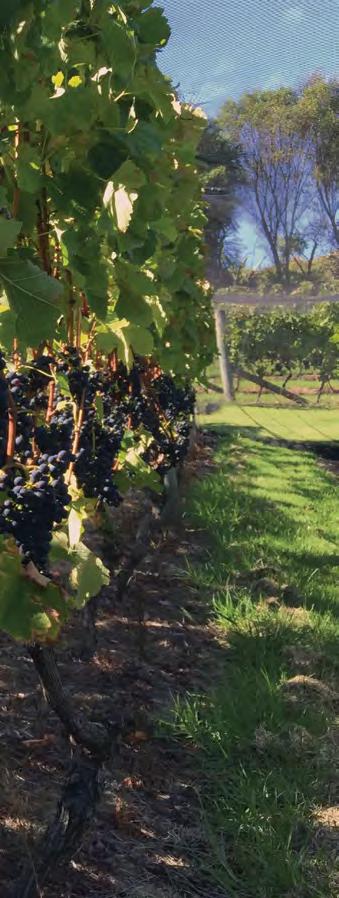
If you type “world’s most influential winemaking consultants” into Google, Sam Harrop’s name pops up. Sam is a hugely gifted and knowledgeable winemaker who has made wines around the world, written books on the subject, was Co-Chair of the renowned International Wine Challenge as well as being a Sake Samurai. Sam is also somewhat of a philosopher. Cedalion is his personal project, made in his home territory of Waiheke Island – his goal is to make worldclass wines. Sam believes in minimal intervention in winemaking, but this doesn’t mean simply kicking back: he obsessively searches for understanding, applying scientific scrutiny and attention to detail at every step in the winemaking process.
“Beauty need not be fanciful. We aim for subtlety, purity and harmony in our wines to allow them to express a rich sense of place.“

A refined and powerful Sauvignon Blanc. it is pale in colour with a subtle but extremely complex bouquet of lime custard, herbs, green gauges and cassis leaf - so much more so than your typical Marlborough Sauvignon! It was made from grapes from three different vineyards in Wairau Valley in Marlborough. Grapes were lightly pressed, and the juice fermented in barrels – one new and three older French oak barrels - using two different types of yeast. After fermentation, the lees were stirred up once a week for twelve weeks, giving it a smooth texture with a soft mid palate. It has a juicy limey acidity with a long and elegant finish. The oak is fully integrated, adding complexity and body without being overtly oaky. Anyone that loves Sauvignon should try this wine.
2019-2021, m8 D9
Lime custard, green gauge, hint of cassis leaf 6°c
Smooth, complex, elegant, [00]
mussels with white wine and fennel
Hawke’s Bay is the most historic wine region in New Zealand, with the first vines planted by Marist missionaries in 1851. Situated on the east coast of the North Island, it is sheltered from the westerlies and thus enjoys a warm climate (although cooler than Bordeaux), low rainfall in New Zealand terms (786 millimetres per year) and a lengthy growing season. Grapes hail from the Gimblett Gravels sub-region, where vines are cultivated on poor deep shingle soils, on what was the river bed of the Ngaruroro River. A savoury and medium-bodied wine with violet aromas and an earthy edge and cedary finish, it is tight in structure with a firm acidity and needs some time to open up. Grapes were hand harvested on April 6th, 2017, destemmed and fermented to dryness over seven days with hand plunging of the skins twice a day. It spent eleven months in barrel with 20% in new oak and the balance in a combination of one, two and three-yearold barrels, and was bottled in late May 2018.

bodied, tight, cedar

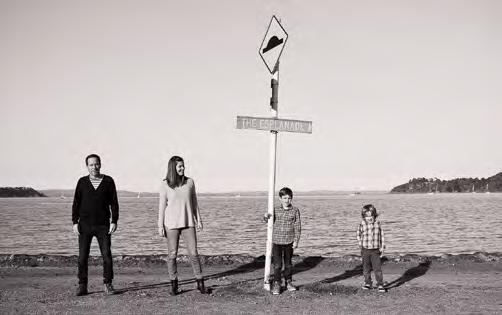

c edalion Sin G le v ineyard c hardonnay, m ineral, l i B rary Selection, w aiheke iS land, 2014 chardonnay $ 86.67 $ 520.00
Sam only releases wines when he is completely happy with them. In his view, the 2016 Arae Chardonnay is still too young, and so he proposed re-visiting 2014 with this special cuvée from his library stock. Only 20 cases of Cedalion Mineral 2014 are available. It was produced from a special selection of grapes from the Arae vineyard, crafted deliberately to intensify its natural minerality. This is a complex wine with intense aromas of oak, fruit, flint and smoke. As the name suggests, it has lots of mineral character. Stone fruit notes, almonds and a touch of vanilla are present in the background. It is smooth with flavours of nectarines, white peaches and a long lemony finish. Delicious now, it will continue to develop for years to come. Arae is a cool site on the western side of Waiheke Island, lying 50 metres above Church Bay and facing Auckland. This site is exposed to prevailing south westerlies. Chardonnay was harvested by hand on March 15th, 2014 and whole-bunch pressed in a basket press followed by a spontaneous fermentation finished in barrel, with 25% new oak and 75% old barrels. The wine was left on its lees for five months with 20% of the blend going through a partial malolactic fermentation.

Waiheke Island, lying to the east of Auckland in the Hauraki Gulf, is twelve miles long from east to west and varies in width from less than 0.5 to 6 miles. It is partially protected from the west and south west winds. The surrounding ocean has a moderating influence, creating sea breezes during the summer days and tempering falling temperatures at night. The weather is generally drier, warmer and more consistent than in Auckland. Grapes for Cedalion Syrah were grown on Block 31, a one-hectare plot perched above a beautiful bay, at 120 metres on the eastern side of the island. Two clones of Syrah were planted on this steep terraced south-west-facing slope sixteen years ago. The slope is protected by surrounding hills, allowing Syrah to fully ripen. Cedalion Clonal Syrah was made from the Hermitage clone, which produces low yields of small, intensely concentrated grapes in tight bunches (some members will remember that Cedalion Single Vineyard Syrah, Clonal, 2014, a blend of two clones, Chave and Hermitage, was featured in C244). The 2015 is intensely fragrant with spicy aromas, crushed black peppercorns and plums, leading to a succulent palate with cooked dark fruits, a vibrant acidity and some firm grippy tannins. It is medium-bodied with a deliciously long incense finish. The wine was kept on skins 24 days post fermentation, then matured in barrels for fifteen months with one third in new 300-litre hogshead, one third in one-year old hogshead and the balance in old oak barrels.
intense spicy aromas, crushed black peppercorns, plums 18°c
cooked dark fruits, incense
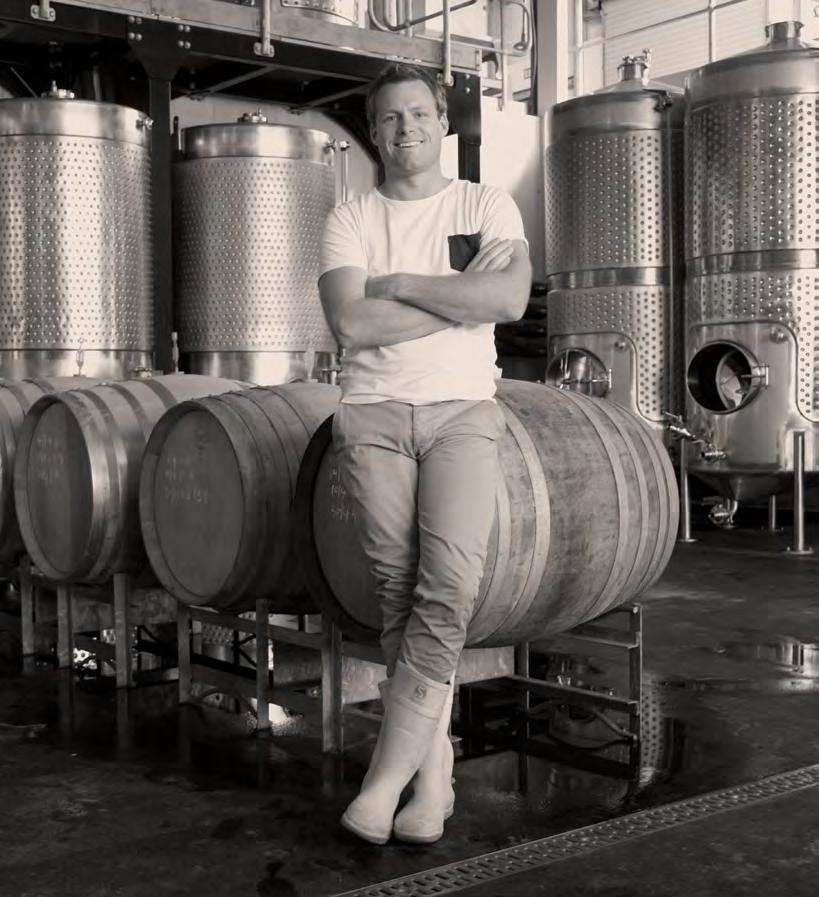
“I believe climate and soils give birth to the unique personality of wine.“
–Dan Struckman
1004
an Struckman Petite Pinot

A wine of substance. A minimal approach to winemaking was taken to respect the personality of the fruit, and personality it certainly has!
Aromas of apples, pears, general fruit bowl with bread and spice are present in the bouquet. It is soft and round on the palate with some residual sweetness giving it weight. This is perfectly offset with a citrus pith bitterness. Pinot Gris grapes from low yielding dry-farmed vines were picked on April 10th, 2018. The grapes were slowly pressed, allowing for some skin contact, and then fermented at 12°C with no use of oak.
Born in South Africa, Dan Struckman moved to New Zealand with his family as a teenager. He works as winemaker at Batch Winery on Waiheke Island, where he makes wines that are all sold at the on-site winery restaurant. Over the years, Dan has been influenced by Sam Harrop, adopting a similar low intervention approach at the winery. In 2017, with the blessing and support of his employers, Dan bought some grapes and started making his own wine.

Petite Pinot
Dan’s passion for Pinot Noir led him to Martinborough, New Zealand’s North Island’s most renowned region for this variety. At the southern end of the North Island, Martinborough is protected by mountains to the west. Cool temperatures are combined with low rainfall in autumn, which allows Pinot Noir to fully mature under conditions similar to Burgundy. Dan ultimately hopes to buy a vineyard there but for the time being he sources grapes from a friend. The 6.5-hectare vineyard is located eight kilometres south of Martinborough town. It was planted twenty years ago on a terrace of the Ruamahanga River, on what was New Zealand’s first sheep station in 1944. The grapes are shipped by ferry across to Waiheke Island, in refrigerated containers. Produced from a blend of three clones – Abel, 777 and 115, Dan’s 2017 Pinot Noir has a spicy, smoky nose with red fruits in the background. It is medium bodied with a solid acidity and will develop in bottle. The fifteen-year-old vines are planted on alluvial gravel terraces on thin poor soils and are dry farmed. Grapes were picked by hand on April 11th, 2017 and left to cold soak for six days. The juice was fermented with extra skin contact and then matured for twelve months in French oak barrels with 19% new.
pears,
1005
red fruits, bitter cherries barbecue beer can pheasant with mediterranean herbs and honeyed baby carrots

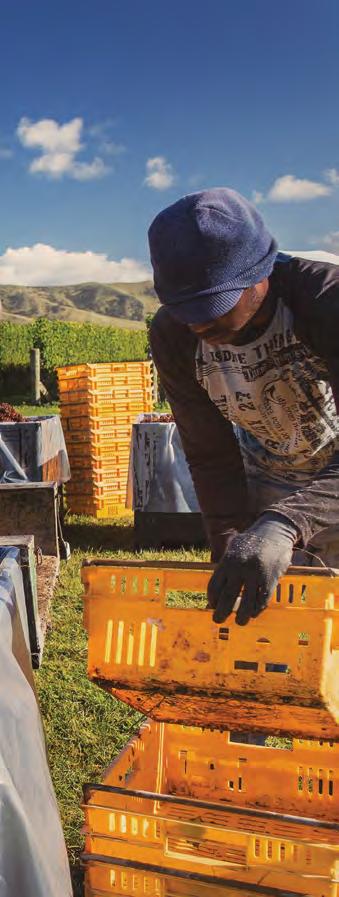
New Z eala N d
Owned by the Valmorbida family, Joval Family Wines is based in Melbourne, Australia. The Italian family arrived in Melbourne after World War II and built up a food and wine empire, originally importing foods from their home country for the Italian community. They have been in the wine business for decades and making wines in New Zealand for many years. They own one of the best vineyards in Marlborough, high into the Waihopai Valley. Wines are made by Peter Jackson – not to be confused with his namesake of Lord of the Rings fame! Peter grew up in Queensland, Australia (not Middle Earth), but Marlborough is very much home for him today.
“We strive for beautifully balanced wines that capture both the site and the region, whilst building additional interest and texture into the background.“
1006
tai n ui Sauvi G non Blanc, m arl B orou G h, 2018
Sauvignon blanc
$ 26.67 $ 160.00
A refreshing wine with passionfruit and lemon aromas. It is light and dry on the palate with more flavours of passionfruit and guava, and a long mandarin and lemon citrus finish. Grapes were predominantly sourced from Marlborough’s Waihopai Valley with some from the central Wairau plain. It was fermented cool to fully capture its fresh crisp character.

1007
Three new wines from New Zealand’s finest wine region, Marlborough
tai n ui Pinot Gri S, m arl B orou G h, 2018
p inot Gris $ 26.50 $ 159.00

Pinot Gris grapes have a pinkish grey colour to them and this wine has a very slight pinkish hue. Flavours of fresh green apples, quince and grapefruit reveal themselves in a wine that has some weight with a long citrus finish. Fermented to dryness, it is a perfect match for all types of Asian cuisine.



Lots of appealing primary red fruit aromas with red cherries and raspberries precede a light palate with good acidity, tangy sour and bitter cherry flavours with a cranberry finish and some toasty oak. Pinot Noir from Marlborough’s southern valleys, Wairau and Ward, was picked, destemmed and placed in open top fermenters. The wine spent seven months in French oak. This wine can be served lightly chilled. In Maori tradition, Tai Nui was one of the great ocean-going canoes in which Polynesians migrated to New Zealand. The Maori word “Tai” translates to tide, and “Nui” to high.
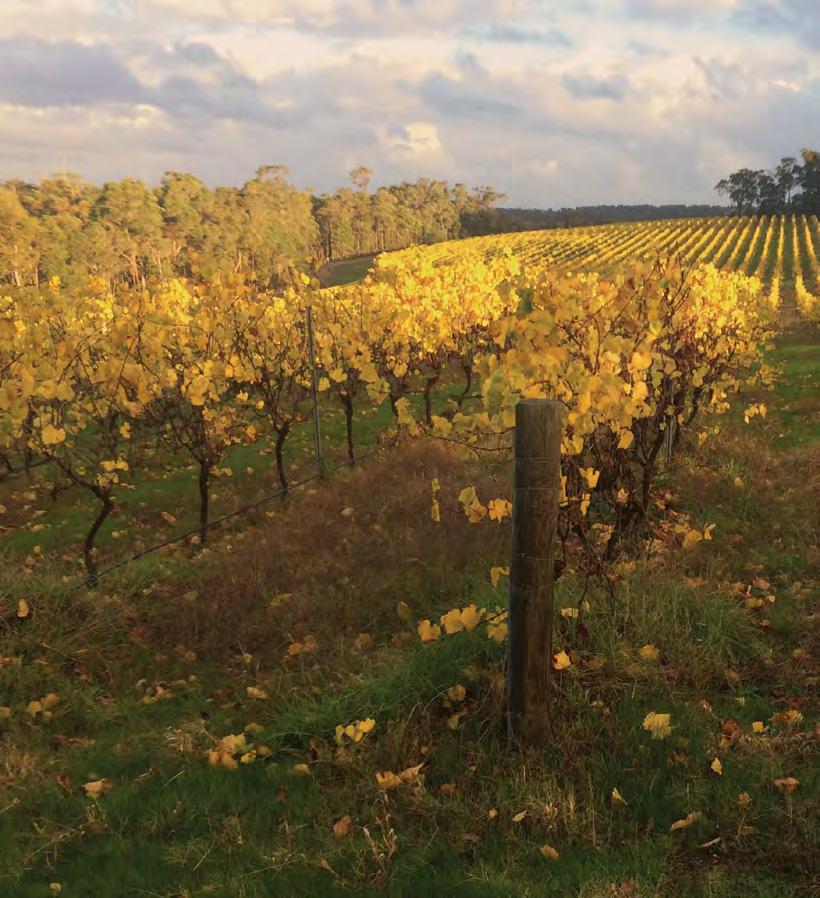
“Season 2018 was near perfect on our site in Margaret River, delivering sensational quality across reds and whites.”

Margaret River is located nearly 3,000 kilometres away from South Australia’s vineyards and over 4,000 kilometres from the Hunter Valley. It is a very different place than the rest of Australia’s wine regions. The climate is strongly influenced by the proximity to the ocean, cradled as it is by the Indian and Great Southern Oceans. Margaret River has the lowest average mean temperature of Australia’s wine regions at 7.6°C and is a high rainfall zone, with 1,160 millimetres per year, falling mainly during the winter months (May to September). The region was originally identified in the 1960s as an area suitable for the cultivation of fine wine grapes by agronomist Dr. John Gladstone.
After a long search for what he considered his ideal location, Ron Fraser planted his first vineyard in 1997 at Rosa Glen, 10 kilometres south of the Margaret River township. Chapman Grove Estate currently consists of 32 hectares planted to both red and white grape varieties on treeton soils or gravelly loam over clay. Wines are made by award-winning winemaker Richard Rowe – who has assisted in the establishment of several five-star producers in Margaret River. He believes that making great wine begins with a deep understanding of soils and sustainable farming practices – a philosophy fully shared by Ron.
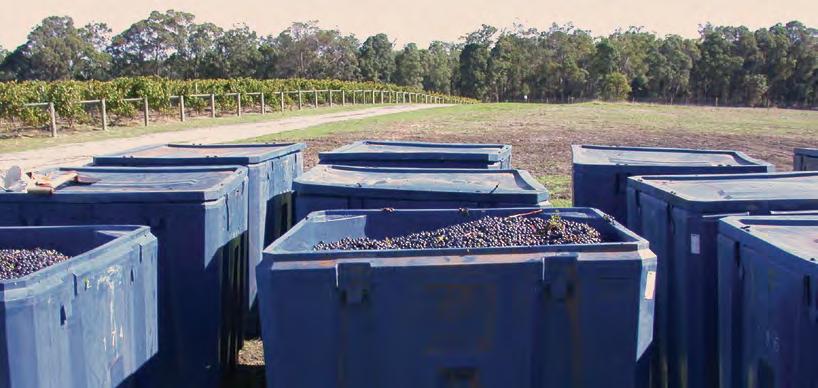
1009
t he l one Quince 1925 Sauvi G non Blanc Semillon, m ar G aret r iver, 2017
Sauvignon blanc, Semillon
$ 26.00 $ 156.00

A delicious cool climate style, it is a blend of 72% Sauvignon Blanc and 28% Semillon. It is distinctly Sauvignon in nature and approaching a New Zealand style. Intensely fragrant with gooseberry and lime aromas, it is soft and round in structure with more gooseberry flavours and some asparagus. The wine was fermented at low temperature with no use of oak.
1010
t he l one Quince 1925 c a B ernet m erlot, m ar G aret r iver, 2016
c abernet Sauvignon, merlot
$ 28.00 $ 168.00
The Lone Quince is dedicated to the memory of the original settlers: World War I soldiers cleared and farmed the land and in 1925 they planted a quince tree. Ron has developed the vineyard around that tree. Deep ruby in colour, this is a vibrant wine with aromas of violets and fennel. It is light to medium bodied with sour blackberry acidity and a savoury finish. A blend of 86% Cabernet Sauvignon with 14% Merlot, it is elegant with fine tannins and was matured for nine months with new French oak staves. A wine with lots of appeal, it won Gold at the Sydney Royal Wine Show.

1011
d reamin G d o G c a B ernet Shiraz, m ar G aret r iver, 2017
c abernet Sauvignon, Shiraz
$ 28.00 $ 168.00

Dreaming Dog Cabernet Shiraz 2017 is a more herbaceous style, with aromas of green leaves and musk over a dark fruit background. Cabernet Sauvignon was blended with 18% Shiraz. The wine has sour black fruit flavours of tart blackcurrants with blackberries. It is medium bodied and youthful with a lingering finish. Dreaming Dog was partly matured for nine months with second fill barrels and oak staves. Ron and his wife are dog people with a particular fondness for the Maremma breed – large white fluffy sheepdogs indigenous to central Italy. The Dreaming Dog range is a tribute to their canine companions.
1012
c ha P man Grove Sauvi G non Blanc, m ar G aret r iver, 2018
Sauvignon blanc
$ 32.67 $ 196.00

I have not yet tasted many 2018 wines from the Margaret River, but by all accounts, it’s a great vintage, and if Chapman Grove’s Sauvignon Blanc is anything to go by, then that certainly seems to be true. Pale in colour, it has aromas of gooseberries, nettles and lime gums. It is smooth and supple, and well balanced by a crisp limey finish. This is a complex wine with herbal notes produced from 100% Sauvignon Blanc.
Ron Fraser planted his first vineyard in 1997.
crisp, herbal, limey finish,
pan seared scallops on a bed of basil and

1013

c ha P man Grove c a B ernet m erlot, m ar G aret r iver, 2016
c abernet Sauvignon, merlot
$ 35.50 $ 213.00
A blend of 64% Cabernet Sauvignon and 36% Merlot, the 2016 Cabernet Merlot is restrained, with aromas of hay, dried flowers and dark fruit. It is relatively light in body with a firm acidity and soft tannins, evolving in the glass to reveal bitter cherry flavours and good concentration. A relatively dry and warm winter was followed by some rains in mid-January. The wine was partly matured for nine months in second-use French oak barrels and staves.
1014 atticu S c a B ernet Sauvi G non, m ar G aret r iver, 2014
c abernet Sauvignon
$ 62.17 $ 373.00

Atticus is Ron’s top wine, and this 2014 is from a great vintage in Margaret River - I fell in love with it immediately upon tasting. It is showing some development and is instantly appealing, with a smoky autumnal bouquet of forest floor, spice, cigar box, incense and tobacco leaf aromas over moody dark fruits. It opens up further with some aeration and I would recommend decanting before serving. It is medium bodied with a fine-grained texture, balanced acidity, dark fruits and a long spicy savoury finish. This wine was named after Atticus Finch, from Harper Lee’s novel To Kill a Mockingbird. The fruit is sourced from a specific plot to produce the highest quality grapes.
aromas, forest floor, spice, tobacco leaf
mellow, savoury, spicy finish
Grilled steak with wild mushroom sauce and pan roasted carrots
Two bottles each 2005, 2007 & 2008
The Margaret River is made up predominately of boutique wineries.

1015
c ha P man Grove c a B ernet
Sauvi G non v inta G e S 2005, 2007 & 2008
$ 67.00 $ 402.00
a selection of three vintages of atticus. 2005, 2007 and 2008 were all good vintages in margaret river. 2006 is notably missing from the selection, as it was a difficult year with c abernet Sauvignon struggling to ripen, hence no atticus was produced. a ll the wines come from the same plot of c abernet Sauvignon planted in 1997. Grapes were picked and processed cold in the early morning, then fermented in contact with skins for ten to fourteen days. The wines were all matured in French oak barrels for eighteen months, using 50% new and 50% one-year old barrels.

atticu S c a B ernet Sauvi G non, m ar G aret r iver, 2005
c abernet Sauvignon

2005 was the first vintage to produce Atticus. Deep brick in colour, it has mellow aromas of hay, vanilla, dried fruits and smoky notes. It is soft with a vibrant palate due to juicy acidity. Fine in texture, it displays flavours of black cherries, cedar and lingering sour fruits. Delicious for drinking now, it will continue to hold for some years. It has won no fewer than three gold medals.
atticu S c a B ernet Sauvi G non, m ar G aret r iver, 2007
c abernet Sauvignon

My favourite of the three vintages – although all of them scored highly! The 2007 has intense smoky aromas, savoury spices, olives and damsons. Once again, it is fine in texture with a vibrant acidity and red cherry fruits. A wine with great personality and style. 2007 was a long dry vintage with consistent temperatures and no rain.
black cherries, smoky
braised beef stew with root vegetables and herbes de provence

olives, red cherries
roast venison with chasseur sauce
atticu S c a B ernet Sauvi G non, m ar G aret r iver, 2008
c abernet Sauvignon
Another good year for Cabernet in Margaret River, with low rainfall and good conditions during ripening. The 2008 will be ready for earlier drinking, with fresh floral aromas and red fruits complemented by flavours of incense. Lighter bodied than the 2007, it is supple and smooth with the characteristic fresh acidity.
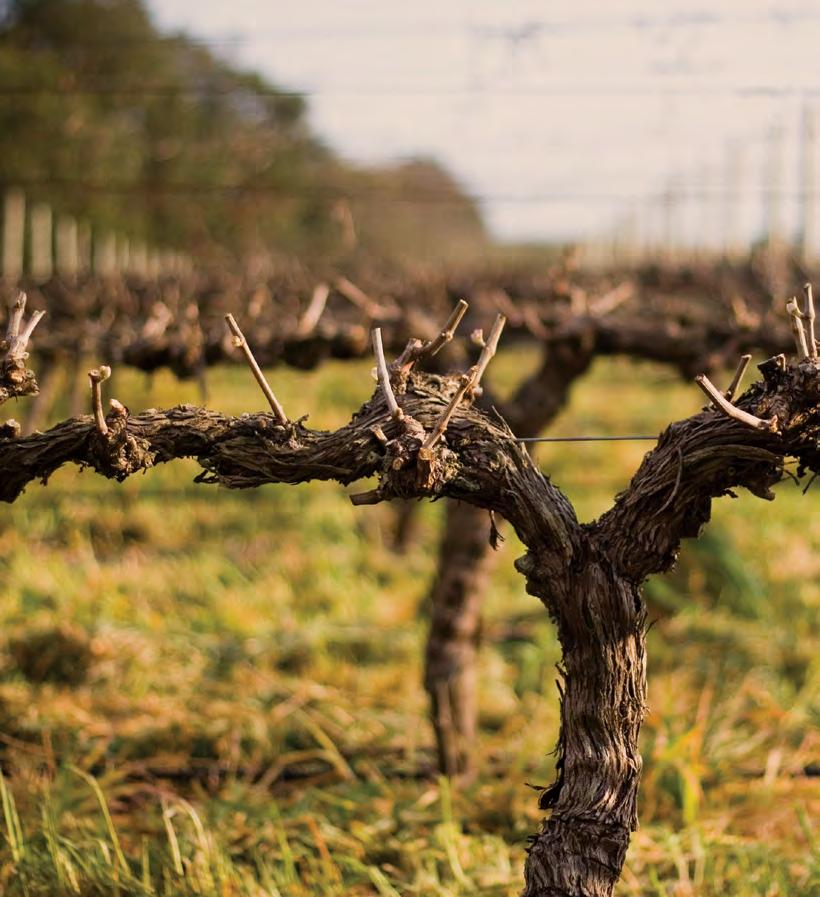

Wines by Geoff Hardy is a family company led by Geoff Hardy alongside his daughter Bec and her husband Richard Dolan. Coming from a long line of pioneering viticulturists and winemakers (his great-great-grandfather Thomas Hardy founded the eponymously named company, now a global brand, in the 1850s), vine growing was his destiny. Geoff is an outdoorsy rather than a corporate type, happier on a tractor than behind a desk. He established his K1 vineyard at Kuitpo in Adelaide Hills in the 1980s. As well as managing the family’s vineyards, Geoff is also a consultant viticulturist and has been responsible for a large number of vineyard plantings in South Australia and experimentation with different grape varieties.
“We encompass six generations of wine knowledge from the father of the South Australian wine industry.“
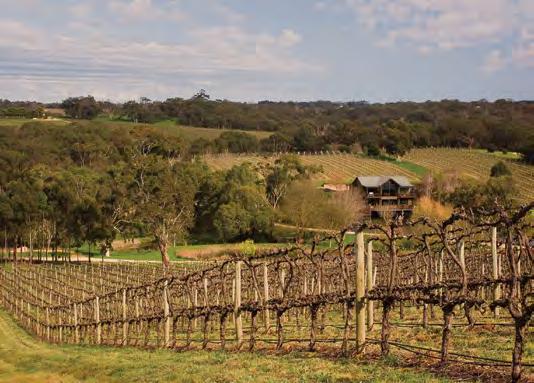
1018 G mh c hardonnay, a delaide h ill S, 2018

1019 G mh m erita G e, South a u S tralia, 2017
1017
$ 25.83 $ 155.00

Semillon contributes a floral magnolia aroma and broad structure to this blend, which is made up of 54% Semillon and 46% Sauvignon Blanc. Sauvignon Blanc provides the acidic backbone and lingering limey citrus flavours with a crisp finish. Overall a dry and refreshing wine, perfect with shellfish.
$ 25.83 $ 155.00

A rich wine with oodles of ripe tropical fruit and pineapple aromas, the 2018 Chardonnay is soft and smooth with lemon and passionfruit flavours and just a kiss of oak. The grapes were grown on the K1 vineyard. The 2018 growing season started slowly, due to low rainfall. Warm weather from January through April but lower-than-average temperatures in March produced mature, flavoursome grapes.
merlot, c abernet Sauvignon, petit Verdot, malbec $ 26.83 $ 161.00
Meritage is a term used for wine based on a blend of grapes commonly cultivated in the classic region of Bordeaux. In this case, it is a blend of 44% Merlot and 38% Cabernet Sauvignon both from McLaren Vale, with 11% Petit Verdot from the Limestone Coast and 7% Malbec grown in Langhorne Creek. The resulting 2017 GMH Meritage is an intensely coloured wine, oozing mellow aromas of blackcurrant pastels and cola. It is soft and smooth on the palate with more fresh blackcurrant character and emerging savoury notes, finishing with lingering black fruits and a good acidity. A complex and well-balanced wine for the price, it merits some cellaring.
rich, passionfruit, lemon, [00]
pan roasted duck breast with morel
1020
G mh Pinot n oir, a delaide h ill S, 2017
p inot Noir
$ 25.83 $ 155.00
Adelaide Hills is one of Australia’s cooler regions, with the Mean January Temperature (MJT) below 20°C. This makes it one of the most suitable areas for producing Pinot Noir wines of distinction. GMH Pinot Noir 2017 is quite pale in colour, developing a brick hue. It has cherry, almond and marzipan aromas and is soft on the palate. Flavours of sour cherry and a firm acidity precede a redcurrant finish.
2019-2021, m8 D9
cherry, almond, marzipan 14°c
Sour cherries, redcurrants
Duck confit with braised rappini on a bed of celeriac and cauliflower purée

1021
G mh c a B ernet Sauvi G non, South a u S tralia, 2017
c abernet Sauvignon
$ 25.83 $ 155.00
Sour blackcurrants, dark fruits
2019-2023, m7 D9
Slow roasted moroccan spiced lamb shoulder with sundried tomato and

GMH Cabernet Sauvignon is a more austere wine than the Meritage blend. Floral and dark fruit aromas are complemented with sour blackcurrant flavours and bitter chocolate finish. Cabernet Sauvignon from Adelaide Hills was complemented with grapes grown in McLaren Vale. With a little more time in bottle, the wine will mellow and become less angular. It was matured in second and third-fill barrels with some French oak staves.
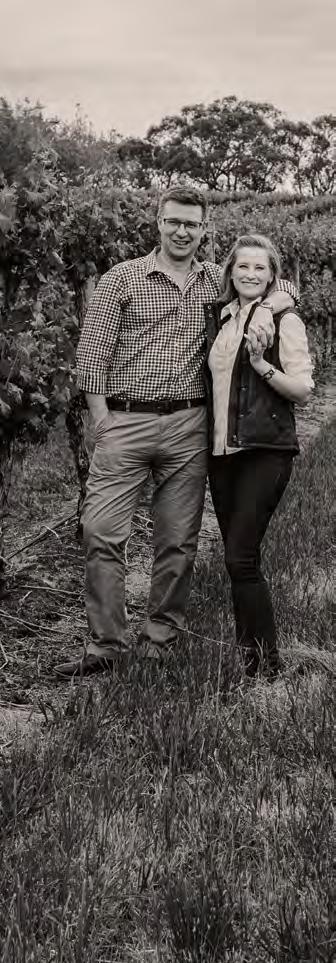
1022
G mh Shiraz, South a u S tralia, 2017 Shiraz
$ 25.83 $ 155.00

Opaque and deep in colour, GMH Shiraz 2017 has intense herbal forest fruit aromas with blackberries and balsamic notes. It is dense and concentrated on the palate with ripe dark fruits – black cherries and violets. A medium to full-bodied wine, solid in structure, it is no wonder that Shiraz is Australia’s most widely planted and popular variety.
1023
k1 B y Geo FF h ardy c a B ernet Sauvi G non, a delaide h ill S, 2016
c abernet Sauvignon
$ 44.17 $ 265.00
Geoff planted the first vines at Kuitpo in the far south of the Adelaide Hills region in 1987, in an area that had up until that time not seen vineyards. The estate became known as K1, as no one was quite sure how to pronounce Kuitpo (an Aboriginal word meaning “grass place”). It is now recognized for producing premium single-estate wines. K1 Cabernet Sauvignon comes from a west-facing plot planted in 1989 on own roots – South Australia is one of the few regions in the world designated Phylloxera free. Vines are trellised with open canopies and produce low yields. 2016 was mild, with low rainfall during the growing season followed by a downpour in early February. The wine was matured in oak barrels for twenty months, using 40% new. The best barrels are selected to produce K1. Dark fruits and floral notes precede a musky savoury palate. This is a serious wine with lots of grip and a slightly austere acidity and tannins. The bitter savoury finish adds depth and the wine should develop nicely with time.

herb-crusted rack of lamb with mint sauce




1025

K1 Shiraz, compared to the Cabernet Sauvignon, has a more smoky creosote character on the nose, laid over a dark fruit background. More succulent on the palate, it has a juicy mid palate. It is medium bodied with a good structure and some grip, currently displaying more fruit than the Cabernet Sauvignon. Planted in an adjacent west-facing plot, also in 1989, the Shiraz vineyard contains two clones – BVRC12 and SA1127.
A sweet, but not overly sweet tasting wine relatively light in alcohol, Autumn Harvest is made from Riesling grapes left on the vines for an extended period. The grapes were picked by hand eleven weeks after the dry white wine harvest, allowing the natural development of noble rot. Golden yellow in colour, the 2017 has aromas of canned peaches, dried apricots and raisins with a touch of tea leaf. It is elegant with a nice intensity of stone fruits, lemon, and mandarin acidity.
Dried raisins, lemon, mandarins, [10]
pomegranate eton mess
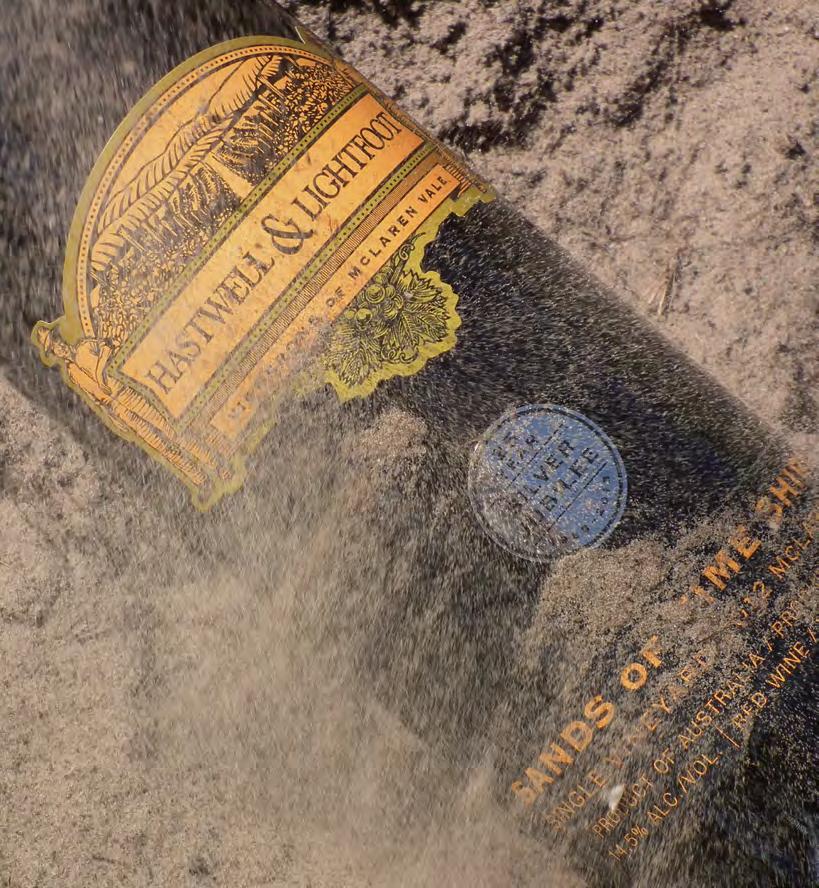
“The fruit characteristics are greatly influenced by the vine’s roots in our deep sands, creating long profiles with a great breadth of flavours.“

Mark & Wendy Hastwell and Martin & Jill Lightfoot purchased this McLaren Vale estate looking for a change of lifestyle from Adelaide city life. The friends planted their first vineyard themselves in 1988. Today they cultivate 40 acres of vines with a range of varieties, including Tempranillo, Barbera, Cabernet Franc and Vermentino, as well as the commonly found Cabernet Sauvignon and Shiraz. They also farm three acres of olive groves. Wines are made by James Hastwell, and Martin’s nephew Richard McGeachy is the Vineyard Manager.
1027 Fat ’n Skinny w inemaker’S Blend, m c l aren vale, 2018
Fiano, chardonnay
$ 26.50 $ 159.00
The 50:50 blend of Fiano and Chardonnay grape varieties produces a wine with some resinous spicy aromas, soft and round on the palate with a creamy texture. The finish has lingering bitter citrus pith notes. McLaren Vale is essentially a red wine growing region with just 6% of acreage planted to white varieties.
1028
Fat ’n Skinny Picker’S c hoice, m c l aren vale, 2017 Shiraz, Tempranillo, b arbera

The 2017 FAT’n Skinny Picker’s Choice shows some development, with balsamic notes combined with undergrowth and forest floor. The combination of Shiraz, Tempranillo and Barbera has produced a light to medium-bodied wine with savoury flavours and a smoky treacle finish. A small amount of rosé was added to the blend to add softness. It was matured with some French and American oak staves and has some grip.
pith, grapefruit, lemon, [00]
and pecorino stuffed ravioli with clam
undergrowth, forest floor, balsamic 16°c
Savoury, treacle
Grilled flank steak with chimichurri sauce
1029
h a S twell & l i G ht F oot Bar B era dal vale, m c l aren vale, 2016
b arbera
$ 31.83 $ 191.00
A rare variety in the region – only 30 hectares of Barbera are planted in the whole of the state of South Australia. According to Martin, no wine has been anticipated longer than this one! Vines sourced from an old Italian grower were planted in 2007 on Paulsen rootstock. But the variety struggled with the McLaren Vale heat and up until 2016 did not produce a sufficient enough crop to be vinified on its own. The 2016 has an earthy rustic character at the same time as aromas of cooked red fruits, redcurrants, caramel and coffee. It is light to medium bodied on the palate, with sour cherry and cranberry flavours leading to a grippy finish with firm acidity. Grapes were harvested on March 12th, 2016 and fermented for nine days in open top fermenters.


1030 h a S twell & l i G ht F
c a B ernet Sauvi G non, m c l aren vale, 2016
c abernet Sauvignon, c abernet Franc
$ 34.00 $ 204.00

A restrained Cabernet Sauvignon with muted blackberry aromas, the grapes came from two blocks –the original block planted in 1988 and the youngest one, planted in 1996. The 2016 is mediumbodied with savoury juicy dark fruits. It is smooth with a marked acidity, good weight and structure – the final blend includes 9% Cabernet Franc. It has a supple silky texture and was matured with French and American oak staves, then bottled in December 2017.
— James hastwell, winemaker. Sensory assessments are made of each barrel throughout maturation to track flavour development.

A little Tempranillo is cultivated in South Australia – it represents less than 1% of the total plantings. Yet Hastwell & Lightfoot had real faith in the potential for this variety in McLaren Vale, believing the climate and the sandy soils (which are reminiscent of Toro in Spain) to be perfect for it. As fans of Tempranillo wines, they planted the variety in 2000 from grafted cuttings to see how it would do. It seems the variety ripens consistently no matter how high the temperature rises. Grapes from the original 2000 planting were harvested on April 8th, 2017 and fermented over eight days. A small amount of Grenache was added to the final blend to give some roundness, and there was no use of oak in order for the fruit to fully express itself.
2019-2022, m8 D9
cooked red fruits 18°c
red and black fruit, tarry finish
eggplant parmesan with crumbled ground turkey breast

Hastwell & Lightfoot Estate, in McLaren Vale, sits on a big sand dune. If you dig down, you can go metres deep and not hit rock. Over 10,000 years, prevailing westerlies have deposited coastal sand which drifted into valleys and ridges. The Sands of Time Shiraz grapes were grown on the Home Block, on vines grafted with the Tahbilk clone in 2010. The 2016 shows some colour development with a brickish hue and aromas of black olives and balsamic. It is medium to full bodied with a fine texture. Red and black cherry flavours emerge on the palate, leading to a sour smoky savoury finish. Grapes were picked on February 26th, 2016. Sands of Time was matured in 65% French and 35% American oak using, a variety of coopers and toast.
2019-2024, m6 D7
balsamic, black olive 18°c
red and black cherries, sour blackcurrant, smoky savoury finish
braised lamb curry with whipped potatoes and baby carrots

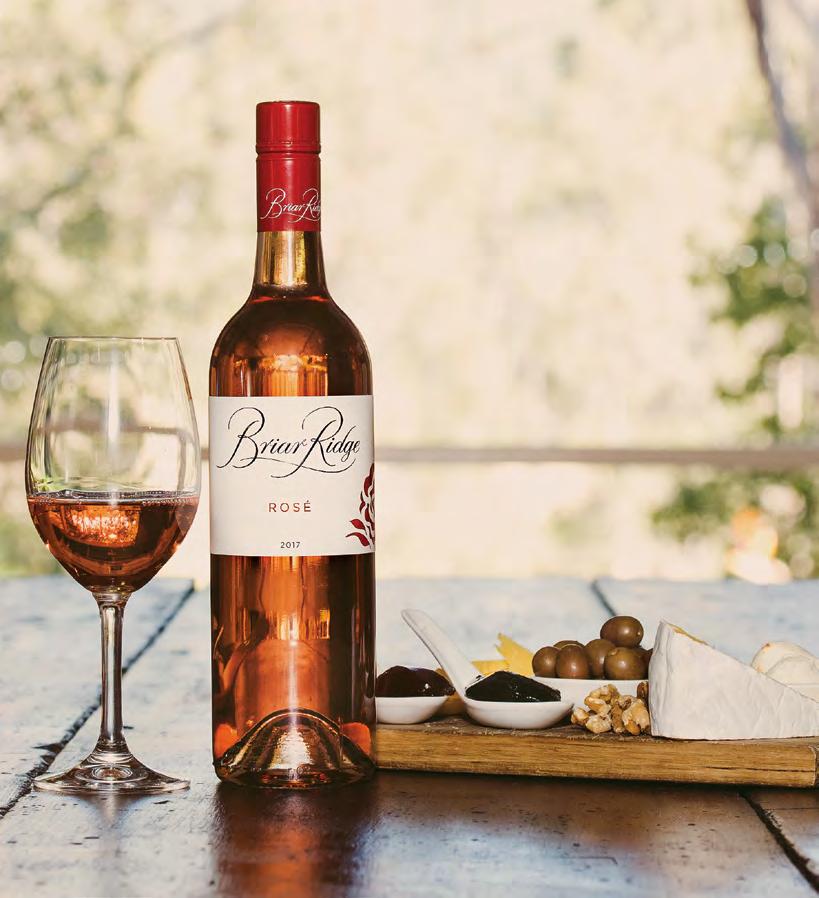
“At Briar Ridge, we focus on keeping things simple in the winery to allow the true expression of our vineyards to shine through.“
– Gwyn Olsen, Consultant Winemaker
Take a look at our gravlax and Semillon food pairing on page 8 of Vino e tcetera! 1033 Briar r id G e e arly h arve S t Semillon, h unter valley, 2018
Briar Ridge Vineyards is based in one of the earliest grape growing regions in Australia: Hunter valley in New South Wales was planted with vineyards in the early 19th century. This is a warm region with high humidity, which can be problematic, but careful vineyard management and winemaking can produce wines of distinction and longevity.
Consultant Winemaker Gwyn Olsen has been based in the Hunter for eight years now. Her influence on wine quality at Briar Ridge is unquestionable. She was promoted to General Manager of Briar Ridge in 2014 and Head of Winemaking for all Davis Family Vineyards the following year. In 2017 Gwyn was selected by the trade’s Wine Australia as one of the Australian Wine Industry’s “Future Leaders”. Gwyn has focused in improving Cabernet Sauvignon in Wrattonbully and overseen the planting of alternative grape varieties in Hunter. Together with young winemaker Alex Beckett, Gwyn crafts wine for Briar Ridge’s extensive portfolio. I can’t wait to taste the results!

A great example of this unique wine style – Semillon is a speciality of the Hunter Valley - it simply tastes different! Pale in colour, it has spicy aromas with floral notes, magnolia, hay and a touch of lanolin. It is dry, light (11.5% alcohol) and crisp with good intensity of flavour on the palate and a refreshing lemony acidity. Cooler summer daytime temperatures in 2018 – with fewer days over 40°C – combined with cool nights, led to intense flavour development in the grapes with the retention of natural acidity. Briar Ridge Semillon vines are planted on well-drained sandy loam soils in the heart of Hunter Valley.

The original Portuguese Verdelho grape is the fourth most widely planted variety in Hunter Valley. At Briar Ridge it is grown on a block which lies right next to the vineyard dam, providing water for drip irrigation of each vine row. After crushing, destemming and chilling, the free run juice was collected and cold settled, then slowly fermented at low temperature. Very pale in colour, it is subtle with aromas of fresh apples, spring meadows and nectarines. Soft and round on the palate, The Dam Verdelho is easy drinking with fresh flavours of apples and pears.

The warm dry 2017 vintage in the Hunter has produced a wine with mellow fruit aromas of cooked peaches, complemented by spicy vanilla notes. More tropical fruits and passionfruit are apparent on the palate. This is a medium bodied wine with a marked acidity, conferring elegance and poise. It is complex with a long oaky and lemon pith finish. Chardonnay is grown in three main blocks with different aspects, each harvested individually. 30% of the wine was fermented in oak and the balance in stainless steel tanks. It was matured for four months on yeast lees, giving it an extra creamy texture.

The Davis family, owners of Briar Ridge, also own vineyards in Orange, Coonawarra and Wrattonbully. Gwyn Olsen is Head Winemaker and responsible for all of them. Merlot grapes for this rosé were grown in the cool region of Orange. The vineyards are planted at 750 metres above sea level on soils derived from volcanic basalt rocks. Salmon pink in colour, Briar Ridge Rosé has mellow red fruit aromas with a supple crisp and fruity palate. It is smooth and very moreish! After picking, grapes were left for a short period on skins before pressing and fermentation.



1037
Briar r id G e Bi G Bully, c a B ernet Sauvi G non, w ratton B ully, 2016
c abernet Sauvignon
$ 42.83 $ 257.00
Gwyn has been focusing a lot of effort on Wrattonbully and believes the potential for producing high quality Cabernet Sauvignon in particular is amazing. Certainly, the quality has markedly improved since she took over. The 2016 Big Bully is intensely coloured with aromas of blackcurrant chews, ripe black fruits with some red berries, vanilla and a touch of balsamic. Oodles of ripe fruits, blackcurrants and bitter cherries emerge on the palate. It is finely textured with good acidity and depth. Cabernet Sauvignon was grown on several parcels on the estate with typical well-drained red clay soils over limestone. Grapes were crushed and destemmed, then the must left to cold soak on skins for 72 hours prior to fermentation. After malolactic fermentation, the wine was matured in new and one-year old French and American barrels for fourteen months.
1038 Quadrant Shiraz, w ratton B ully, 2014

For those members that are looking for a wine with some development – the Quadrant Shiraz 2014 is tasting absolutely delicious right now. It has a mellow bouquet with balsamic red fruits, red cherries, some undergrowth and good depth. It is smooth and rich on the palate with ripe fruits, bitter red cherries and vanilla – nicely mature yet vibrant and youthful at the same time – it should remain at its peak for some time. Produced in the excellent 2014 vintage.
mellow, ripe fruits, bitter red cherries, vanilla

Yenda

It was a family adventure when Bob and his wife Cherie bought a remote piece of land high up in the Barossa, purchased a caravan, took their kids out of school and left the city behind. The couple planted their first vineyard in High Eden, at 500 metres in altitude, without really knowing what they were getting into. Today the vineyard is well established, and Bob’s company has grown to include a winery at Yenda in the Riverina region in New South Wales. Grapes are sourced from a number of regions as well as Bob’s vineyards, and the wines are made by James Ceccato.
Found S tone v ineyard Select u noaked c hardonnay, South e a S tern a u S tralia, 2018
Foundstone Unoaked Chardonnay is a refreshing style with melon and peachy fruits, leading to a crisp lemon and green apple finish. Riverina Chardonnay grapes were harvested in early February after a hot dry summer and fermented at low temperature. Riverina is a hot region which has lots of sunshine hours and high summer temperatures. It suffers from little rainfall, relying heavily on the Murrumbidgee Irrigation system. Grapes grown in the cooler Padthaway region, part of South Australia’s Limestone Coast, were harvested at the end of February and the two batches were combined to produce this refreshing dry style.
2019-2020, m8 D9
peaches 6°c
Fresh apples, melon, [00]
pan seared basa fish fillets with mango and red pepper chutney

1042
1041
1040
Found S tone v ineyard Select Sauvi G non Blanc, South e a S tern a u S tralia, 2018
Sauvignon blanc
$ 22.67 $ 136.00

Sauvignon Blanc grapes from both Riverina and Padthaway vineyards were harvested in the cool of the night in order to maximize the fruit – dry and light, it brims with aromas of fresh mangos and passionfruit, leading to a crisp palate with lemon and lime flavours.
Found S tone v ineyard Select r o S é, South e a S tern a u S tralia, 2018
b arbera, c abernet Sauvignon, Shiraz
$ 22.67 $ 136.00

Delightfully vibrant in colour and in style, Foundstone Rosé has aromas of raspberries and strawberry leaves. It is smooth and easy drinking with some weight. Produced from three grape varieties – Barbera was grown in Riverina, Cabernet Sauvignon and Shiraz in Coonawarra, each was picked and vinified separately then combined to produce this dry wine.
Found S tone v ineyard Select Shiraz, South e a S tern a u S tralia, 2018
Shiraz
$ 22.67 $ 136.00
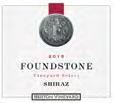
Great value wellmade Shiraz, Foundstone 2018 is intensely flavoured and medium bodied. Aromas of red apples, wine gums and spices precede red cherry, menthol, toast and bitter cherry flavours. The majority of Shiraz grapes were harvested locally over three weeks in February and March. Each parcel was fermented separately for four to six days and matured with French toasted and untoasted oak.
crisp, lemon, lime, [00]
Fruity, smooth, [00]
Tuna three ways – grilled, ceviche and tartare
red cherries, menthol
Grilled portobello mushrooms and asparagus with shaved pecorino romano and aged modena balsamic vinegar

Read our Q&A with Bob Berton in Vino e tcetera.
1043
Found S tone v ineyard Select m erlot, South e a S tern a u S tralia, 2018
merlot
$ 22.67 $ 136.00

Foundstone Merlot has floral notes with black fruits and chocolate aromas. It is medium to full bodied with succulent black fruit flavours, a juicy acidity and velvety texture. It is persistent on the palate with a long savoury bitter cherry finish.
1044
mushroom risotto
Found S tone v ineyard Select c a B ernet Sauvi G non, South e a S tern a u S tralia, 2018
c abernet Sauvignon
$ 22.67 $ 136.00
Fruity aromas with blackberries and red apples are complemented by floral lavender notes. Foundstone Cabernet Sauvignon is a medium bodied wine, quite firm in structure with good depth, black fruit flavours and an appealing savoury finish. It was fermented in stainless steel tanks with just a touch of residual sweet fruit and matured with French oak.

1045
Berton v ineyard w inemaker’S
r e S erve v ermentino, r iverland, 2018
Vermentino $ 26.50 $ 159.00

Winemaker’s Reserve
Vermentino is pale in colour with intense aromas of lime, quince, green plums and a hint of fennel. This is an elegant wine with crisp acidity and a dry finish. Grapes from the Riverland region were harvested during the cooler night hours. Only the free run juice from the press was fermented slowly at low temperature, followed by a short period aging on yeast lees.
2019-2020, m8 D9
Lime, quince 6°c
1046
Berton v ineyard w inemaker’S r e S erve Shiraz, Padthaway, 2017
26.50 $ 159.00

Winemaker’s Reserve
Shiraz is intensely coloured and has dark fruits, menthol and eucalyptus aromas. It is smooth and succulent with smoky black fruits and minty flavours. A medium to full bodied wine, concentrated, with a long fresh fruit finish. Produced from Shiraz grown in Padthaway, the grapes were picked at night and transported to the winery in Riverina. The grapes were fermented for four to six days, racked and the skins pressed. Once the fermentation was completed, the wine was matured on French oak for the malolactic fermentation.

1047

A definite “Coup de Cœur” for me, Bob’s 2017 Coonawarra Limited Shiraz exudes charm with herbal black fruits and tarragon aromas. It is soft on the palate, developing a firm structure, and is well balanced with good acidity and depth. It is linear and classic in style, finishing on notes of black cherry and liquorice. Shiraz was grown in Coonawarra at 60 metres above sea level, benefiting from the maritime climate with long sunshine hours interspersed by cold nights. After fermentation in tank, it was matured in French oak barrels for nine months.
pan
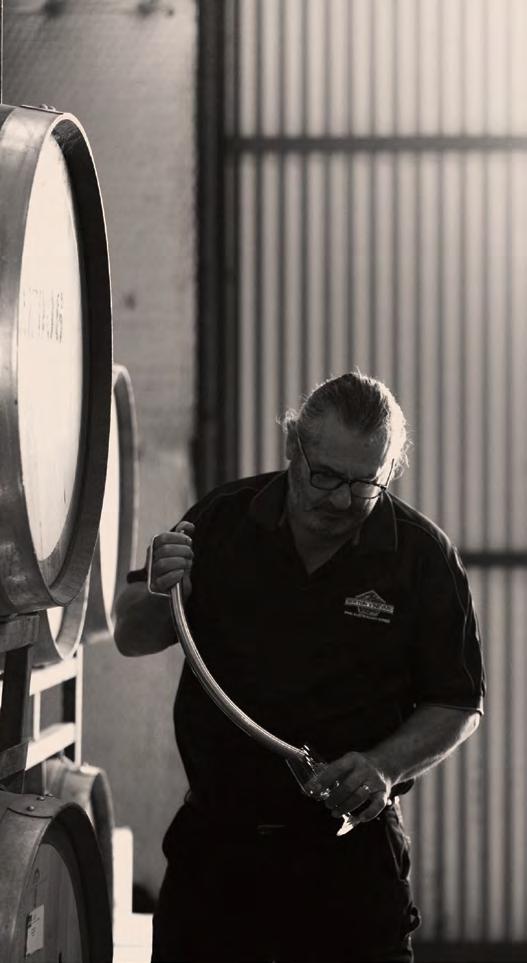
1048

Bob gets very excited and emotional about the Bonsai Vineyard – and I completely understand why. It is the first vineyard he planted with his wife Cherie in 1996. Its remote location, high up in the High Eden, is not easy to find. It is set in a windy rugged isolated area at an altitude of 500 metres. Searching for a change of lifestyle, the couple purchased the plot in the early 1990s along with a caravan and moved their kids out of school. By all accounts, the teenagers were not terribly impressed at the time, having been forced to leave school friends behind and finding themselves out in the boonies. They obviously got over it as daughter Leigh now works alongside them as Marketing Manager. Cherie and Bob planted the vines themselves but with low rainfall, no access to water and the relentless winds, the vines were very slow to establish themselves, hence the Bonsai name. Today there is a dam providing water for drip irrigation and the vineyard is in fine health although the name persists. Bonsai Shiraz Cabernet is produced from the best barrels from the plot. The 2016 has intense spicy oak, cloves and woody notes over a fruity background. It is medium bodied with bitter chocolate and cherry flavours. The oak should integrate further with some cellaring. Both Shiraz and Cabernet components were harvested at night and fermented with French oak. The wine was matured in barrel for twenty months. Each barrel was then tasted and the finest selected for the blend.
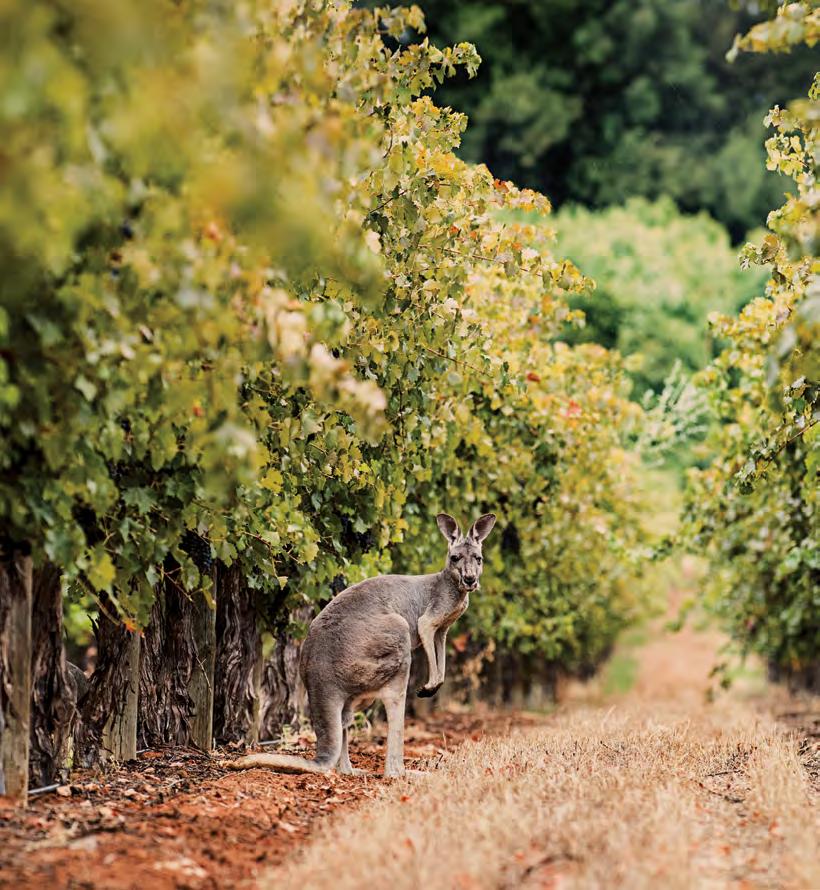
“We believe in adopting sustainable production methods to ensure that we support the local flora and fauna with whom we share our space.“
– Craig Thornton, Vineyard Manager, Sunnycliff Estate
Sunnycliff Estate, established in 1989, is located close to the Murray River near Mildura. Winemaker Frank Newman makes a range of well-crafted and affordable varietal wines.
Sunnycli FF eS tate S Parklin G Brut c hardonnay Pinot n oir, m urray-d arlin G, nv
chardonnay, p inot Noir $ 21.17 $ 127.00
An elegant and complex bottle of fizz that punches way above its weight. Produced from the classic Chardonnay and Pinot Noir varieties, grapes were harvested in mid-January and underwent a traditional first fermentation in tank followed by some lees aging. The complexity comes from the solera blending process which combines six different vintages. The second fermentation is followed by addition of small dosage (sweetness). The result is a wine with a mellow bouquet of brioche and stone fruit notes, a creamy texture and a crisp finish.


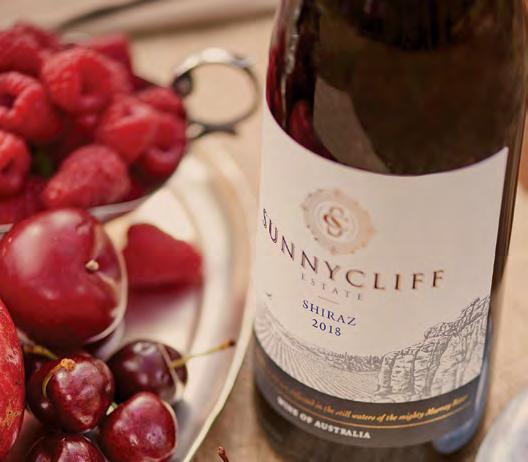
Very pale, almost colourless, this is a light and refreshing Sauvignon Blanc with fresh apple flavours and a tangy lemony finish. Sauvignon is planted on five different blocks on the Sunnycliff Estate and harvested in February. It was fermented at low temperature using aromatic yeasts.
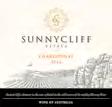
A soft, fresh Chardonnay with flavours of apples, pears and a touch of white peach. It is soft and smooth with a creamy texture. A small percentage of the blend was fermented with oak.

A pale, easy drinking, light bodied rosé wine, produced from a blend of 96% Semillon and 4% Malbec. Grapes were harvested in early March with Semillon added to a small volume of Malbec and fermented for 24 hours.
1053
Sunnycli FF eS tate Shiraz, m urray-d arlin G, 2018
Shiraz
$ 18.42 $ 221.00

Excellent vintage conditions in 2018 allowed a perfect ripening of Shiraz to produce a wine with mulberries and red cherry aromas, complemented by a spicy oaky character. It is smooth and light to medium bodied with forest fruit flavours.
2019-2021, m8 D9
18°c
Spaghetti lamb bolognese, aged cheddar and crusty loaf
1054
Sunnycli FF eS tate c a B ernet
Sauvi G non, m urray-d arlin G, 2018
c abernet Sauvignon
$ 18.42 $ 221.00
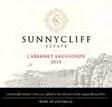
Sunnycliff Estate Cabernet Sauvignon 2018 is mellow with dark fruits and a hint of smoke and pencil lead aromas. Fuller bodied than the Shiraz, it has good structure and weight with a firm finish. Grapes were harvested between March 23rd and April 4th and fermented in sweeping arm Potter fermenters. It was matured for a short period with American and French oak.
2019-2022, m8 D9
mellow dark fruits, smoke, pencil lead 18°c
Structured, medium to full bodied
Duck wellington, with cherry sauce and wild mushroom risotto
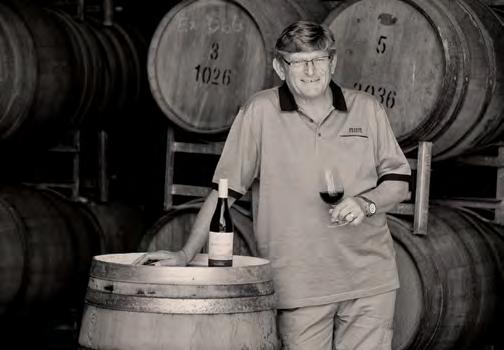
1055
Sunnycli FF eS tate Shiraz c a B ernet, m urray d arlin G, 2018
Shiraz, c abernet Sauvignon
$ 18.42 $ 221.00
A light to medium bodied wine with aromas of redcurrants and chocolate and a grippy finish. Grapes were harvested between March 3rd and April 4th, 2018. Each variety was picked and fermented separately, and the best parcels matured with fragrant oak. The wines were blended after the malolactic fermentation to ensure full integration while maturing in oak.

Opimian’s wine programs are designed to help you develop your palate at each stage of your journey. It starts with Discovery; once you’ve cultivated your curiosity and explored the wine world, you can graduate to Select Plus — the “next level” mixed cases, with both ready to drink wines and wines for aging. After you’ve challenged your palate and started your cellar, it’s time to start collecting with Founders’ Choice — premium wines available exclusively through this program. You do not have to worry about deadlines or ordering procedures since Opimian automatically places an order on your behalf with every new Cellar Offering. Your preferred payment will be used, then your wine is shipped and you will receive a Pick Up Notice indicating where to pick it up. Visit opimian.ca for more information.

EAGER TO LEARN your way around the world of wine or simply enjoy a selection of bottles for everyday drinking? The Discovery program has it all. Over the course of the year, members enrolled in this program receive one mixed case of six bottles from a featured supplier per cellar offering. These wines are all for immediate drinking so you can indulge in one or two the moment they get to you. Whether you’re new to Opimian or fancy hopping on an introductory tour of the world of wine, we recommend this route.

DELVE INTO A VERSATILE SELECTION of bottles and explore the four corners of the world of wine. This program features both early drinkability and mid-term aging potential bottles so you can enjoy some now and lay the others down. Throughout the year, Select Plus members receive one mixed case of six bottles per Cellar Offering. These wines may all be enjoyed young but will benefit from some maturing time. The ideal program for those who wish to expand their horizons and refine their palate one bottle at a time.

A COLLECTOR’S DREAM Dedicated to the spirit of our Founders, this program features wines that are exclusive to this program and don’t appear on our Cellar Offerings. Made up of six bottles of a premium wine with a dedicated back label and a special message with tasting notes from the producer, each of the cases you will receive represents some of the very best our producers have to offer. These bottles offer long-term aging potential so you might want to free up space in that cellar … or start building one.